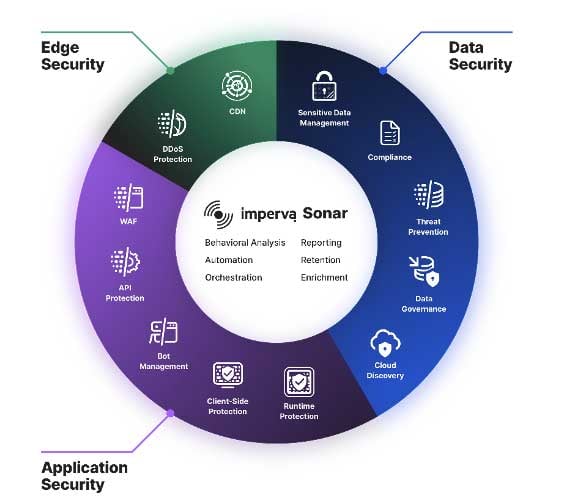Today, Imperva, the cybersecurity leader whose mission is to “protect data and all paths to it”, has launched the Imperva Sonar platform, which eliminates the need for siloed point solutions and delivers integrated analytics while automating workflow and accelerating incident response.

Saving users time and reducing costs, organisations can now simplify the security of their most targeted business assets as they accelerate digital transformation projects. Advanced analytics provide visibility to two of the most challenging information security blind spots: the applications where breaches most often originate and the data most targeted for theft.
Security teams will benefit from the new, integrated unified management console that ties together all aspects of the Imperva Sonar platform into one dashboard. The console brings together security performance metrics, attack analytics, and suspicious traffic for easy investigation. Customers have visibility into mitigated Distributed Denial-of-Service (DDoS) attacks occurring simultaneously with bots abusing Application Programming Interfaces (APIs). The simplified user interface surfaces key risk areas via machine learning and enables one-click resolution capabilities, helping resource-constrained security teams resolve issues faster.
“Data is the lifeblood of the modern business, and yet most organizations fail to adequately protect it despite its importance. As digital transformation reshapes the IT landscape, organisations are lacking the visibility and control needed to secure precious data, and to respond quickly to various threats and security incidents.
“An integrated security platform that provides complete visibility and protection, from the application edge to back end systems and databases, is a lifeline for businesses grappling with the complexity of secure digital transformation,” says Chris Rodriguez, Research Manager, Cybersecurity Products, IDC Research.
Organisations have accelerated digital transformation projects, and monolithic IT environments have evolved into an ecosystem of APIs and applications operating in multi-cloud environments. Over the course of 2020, Imperva Research Labs found that data leakage attacks – incidents where data was transmitted from an organisation’s corporate network to an external destination accidentally or deliberately — jumped 93%. Meanwhile, security budgets have not maintained that pace, and customised solutions for applications and data have forced organisations to consolidate security tools, all while maintaining productivity from overwhelmed security teams.
“The rush to modernise has created gaps and security teams lack visibility into the data lifecycle and how sensitive data is being accessed,” says Kunal Anand, CTO, Imperva.

“The Imperva Sonar platform is the industry’s first solution to give security-conscious organisations a unified approach to protect their data wherever it lives — from outside to inside the network — all within one tool.”
For organisations large and small, Imperva Sonar platform enables security teams to protect the most heavily trafficked parts of their infrastructure while reducing the complexity caused by dozens of point products in their security stack. By applying 20 years of security expertise to protecting hybrid cloud environments, the Imperva Sonar platform stops complex and automated attacks targeting web applications, the software supply chain, and data access from insiders and compromised credentials.
The Imperva Sonar platform combines three critical vectors of organisational security: Edge, Applications and Data. It is designed to protect all paths to data from outside the network to inside the network, applications, APIs, and distributed database environments.
- Edge: Accelerate content delivery and ensure optimal availability with DDoS and Domain Name System (DNS) protection built on a secure content delivery network (CDN).
- Applications: Stop advanced attacks with multiple best-of-breed products on a unified Web Application and API Protection (WAAP) solution that unifies web application firewall (WAF), runtime protection (RASP), advanced bot protection, client-side protection, and API security.
- Data: Discover, classify, and protect critical data, wherever it lives, from theft, abuse, and exfiltration with database security, cloud data security, and data risk analytics.




